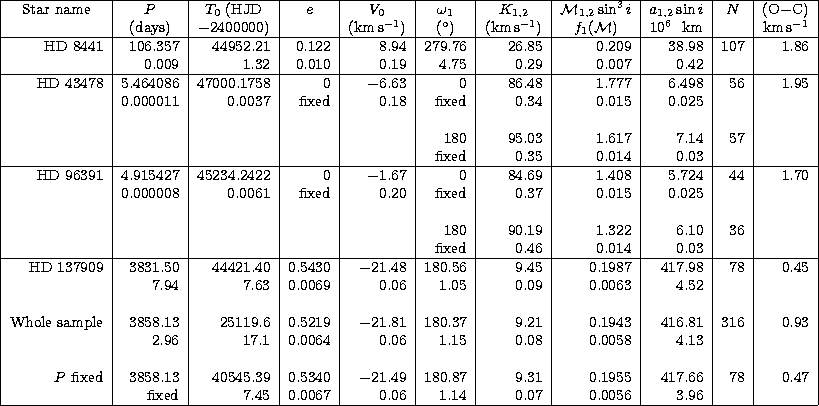 |
In order to increase the as yet insufficient statistics, a radial velocity survey of cool, magnetic Ap stars has been initiated in 1985 using the CORAVEL scanner. Some Am stars were also monitored in the course of this programme, for ambiguous classification caused them to be considered as Ap stars. Preliminary results of this survey have been published by North (1994). Observations of Am stars with CORAVEL had been initiated in the early eighties by M. Mayor and W. Benz, with the purpose of determining their projected rotational velocities, but the results were not published. Since this project was not intended to determine the rate of binaries, only few stars have more than 2 or 3 measurements, and HD 96391 was one of them.
In 1992, two of us (JMC and NG) began a radial-velocity survey of all northern Am stars whose metallic type is cooler than or equal to F2, with the purpose of improving our knowledge of their multiplicity. The limit imposed on the spectral type deduced from the metallic lines was chosen because of CORAVEL's optimum efficiency for cool stars. The stars HD 43478 and 96391 were included in this survey and were therefore measured independently by the Geneva-Lausanne observers as well as by the Toulouse observers. The latter measured also a few Ap stars, and we present here the results based on the merged data of these common stars.
The observations are briefly described in Sect. 2 while the results are
presented and discussed in Sects. 3 and 4 for the Ap and Am stars
respectively. Extensive use has been made of Renson's (1991) catalogue in this
work.
 |
Copyright The European Southern Observatory (ESO)